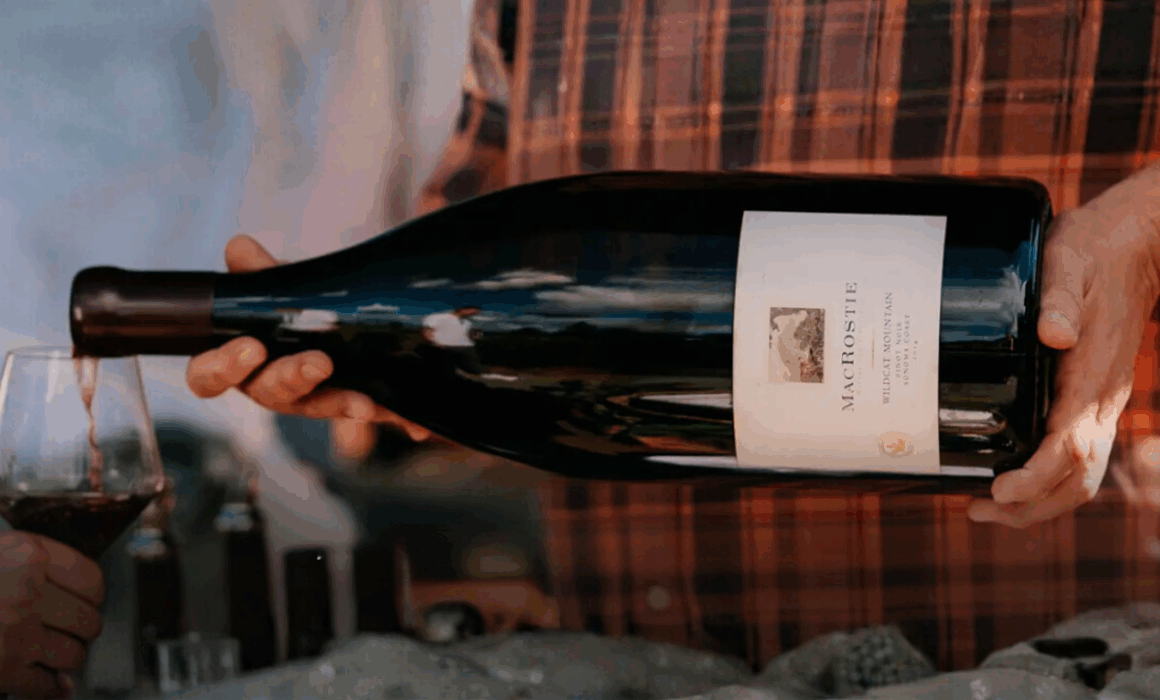Magnums Show You Care
By: Virginie Boone
The standard size wine bottle is 750 milliliters (ml), a standard set over time via the demands of global trade, particularly between France and England. By 1975, as trade expanded beyond those borders, it was officially set by the European Economic Community, simplifying customs and tax calculations as well as the disconnect between how different places measure: The United States and United Kingdom using Anglo-Saxon measures of their own, while mainland Europe had been using the metric system as far back as 1795.
The English-based trade on the imperial gallon, or about 4.546 liters, an amount defined in 1824. A 750 ml bottle was easy to convert from a 225-liter barrel (50 gallons) to 300 bottles of 750 ml each, or one imperial gallon equaling six bottles. Thus, a six-bottle case became standard at the time.
A magnum – Latin for large, though others say it comes from the Latin word Magnus, meaning great – is two 750s in one bottle, totaling 1.5 liters of liquid, or 10 five-ounce servings of wine, depending on your pour.
The bottles themselves were made possible beginning in the 19th century when glass production became industrialized and no longer had to be forged by hand (and lung capacity, with glassblowers only able to breathe 650-750 ml of air in a single breath to create a bottle). Henry Ricketts & Co. in Bristol, England is credited with registering the first 750 ml bottle mold in 1821. It took a bit longer than that to get it right.
Nowadays, there are splits (1/4 of a standard bottle), half-bottles, magnums and jeroboams (double magnum), among other less-common sizes. Magnums are said to age the wine inside more slowly than a smaller size bottle given its larger expanse and thus less chance of early oxidation.
“The wine-trade theory is that the perfect size for stately maturation is the magnum, because the ratio between the volume of wine and of oxygen is supposedly optimal,” writes Jancis Robinson in The 24-Hour Wine Expert. “Even bigger bottles of fine wines tend to be for show-offs.”
Nothing wrong with that. So as we enter the season of gatherings, consider the magnum for your parties and dinners, or even as a grand gift. There are lovely options from throughout Sonoma County.
The Russian River Valley producer behind a wide range of delicious Chardonay, Pinot Noir, Grenache and Zinfandel has a whole section of magnums to offer, including a 1.5 liter of its 20th Anniversary Pinot Noir.
The longstanding Russian River Valley winery and Pinot Noir/Chardonnay specialist has magnums of 2021 Olivet Lane Vineyard Chardonnay, from a longstanding vineyard partner.
One of Sonoma Valley’s Century Club members, family-owned and growing grapes for more than 100 years, magnum choices include a Sonoma Coast 2022 Rosé in 1.5 liter, 2016 Sonoma Valley Vintage Reserve in 3 liter, and magnums of 2018 Sonoma Valley Cabernet Sauvignon and 2020 Sonoma Coast Gewurztraminer, a good choice for Thanksgiving.
The multigenerational Alexander Valley producer has magnums of 2022 Chardonnay, 2021 Reserve Chardonnay, 2018 Next Red and 2015 Cabernet Sauvignon available, each cradled in a wooden box.
One of the fantastic family-run estates in Sonoma Valley/Moon Mountain, choose between the 2021 Isthmus, 2020 Nun’s Canyon Vineyard or 2018 and 2019 vintages of Hamel Family Ranch, some of which are also available in 3 liter.
The Alexander Valley estate has large-format Cabernet Sauvignons dating back to 1979 and some Chardonnay 1.5 liters too. Current vintages are 2019 Cab and 2020 Chardonnay, with a 2020 Cabernet Sauvignon 12 liter (!) on offer for $2,500 if you want to really go big.
The lovely historic property planted to old vines offers its 2023 Russian River Valley Zinfandel in 1.5 liter, another fantastic choice for the Thanksgiving table.
Based on Westside Road, the Pinot Noir/Chardonnay specialist has large bottles of many of their single-vineyard Chardonnays and Pinot Noirs to sell and also half-bottle offerings.
Coastal-driven wines made by Matt Taylor, Mascarin has a magnum of its 2022 Red Field Blend Angelo Vineyard from Dry Creek Valley in 1.5 liter, which is driven by 85% Syrah blended with both red and white varieties grown on the site.
Dry Creek Valley’s Rhone, Sauvignon Blanc and Zin specialist has a 2023 Wine Creek Ranch Rosé in 1.5 liter, a blend of organic-certified Grenache, Petite Sirah, Counoise, Mourvedre and Primitivo.
Another Century Club family-run winery, with vineyards across Carneros/Sonoma Coast/Sonoma Valley/Petaluma Gap, its 2024 Vin Gris of Pinot Noir Rosé in 1.5 liter is a limited offering from El Novillero Vineyard, made in a fresh and fruity style with tons of acidity.
For Cab lovers, you can’t go wrong picking up the producer’s 2021 Alexander Valley Cabernet Sauvignon in magnum from an elegant and complex vintage that’ll continue to age beautifully over the long haul.
Photo By: MacRostie Winery


